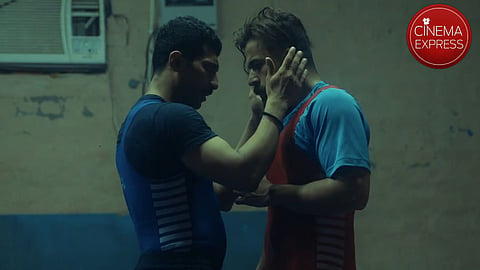

Something commonly said in India about Shakespeare is that had he been born here after the cinema boom, he would have been the biggest commercial filmmaker in the nation. Filmmaker Aditya Watts has adapted the Bard's play Troilus and Cressida into a rooted film set in Haryana, titled Kaansya (Bronzed). "In my opinion, Shakespeare is a no-nonsense writer. It is amazing how he captures the deep-seated ambitions of every human in his characters, especially in Troilus and Cressida, making all of his plays universal," he says.
As an addendum to his earlier point, he says, "Shakespeare has lent several commercial tropes to us, which is why you enjoy certain things without even knowing they were inspired by him. My mother is a masala film lover, but she loves Omkara (adapted from Othello). Some claim that the kind of language he uses makes his works opaque and hard to comprehend, and there is some truth to it. But the rooted human nature and desires in his plays make them universal and timeless."
Aditya says that Troilus and Cressida offered him a big canvas of characters to explore. "I first read the play in 2014 and immediately wanted to make it into a film, but the writing took me about two years, on and off. The play goes to the root of human motivations, where each character explores how they can gain from a huge event that sparks off the plot. When push comes to shove, we remove the veils and masks of goodness and reveal our true selves."
The filmmaker also explains navigating the process of adapting the play for the Indian audience. "The play is adapted from Homer’s Troy, and Shakespeare made it his own. I, too, had to make the story my own and Indianise it. Thanks to my co-writer, also named Aditya, who belongs to Haryana, he brought authentic Haryanvi culture into the film," he says, adding that the choice of Haryana was convenient to fit in certain societal norms and characters of the play. "You can draw parallels between Hector of Troy and Kaansya's Virender. Both characters want to be exemplary men who safeguard their family's pride and shoulder all responsibilities by themselves."
His process of Indianising the play enabled him to introduce some interesting male characters who represent one archetype, unlike Shakespeare’s work. "Like I said, Virender is like Hector, who takes everything upon himself. But unlike Hector, Virender weeps under the pressure of burdening himself with too many things. As far as I have seen, Indian men are quite soft and vulnerable. That’s why, although Virender displays all his machismo throughout the film, I wanted it to break at one point. There is his younger brother, who looks shady but is calculative and can see through Virender’s vulnerabilities to get what he wants," he says. The filmmaker goes on to add, "Kaansya is predominantly about masculinity and male egos, but I have also made sure to show how women navigate this masculine world. While some women struggle for elbow room in the film, Krithika makes peace with this milieu and finds an agency to express her views within the scope of her confines. The film has three female actors and nine male actors, which very much sums up the kind of story this will be. But I was also keen to highlight how the women plan their moves here."
Aditya shares that the shoestring budget of an indie film forces creative solutions to compensate for the lack of certain elements. "Kaansya is about two warring families wanting to resolve their conflict by making their sons wrestle. But with our budget, we couldn’t afford a stunt choreographer. We learnt certain moves directly in the akhada (gym). We made sure to stick to some simple moves like the German suplex so that the actors didn’t put their bodies at risk. These were some ways we creatively compensated for not having the necessary technical expertise," he remarks. He further adds that factors such as the budget and the lack of clarity in distribution have made his independent filmmaking experience a "torture". He says, "I shot my film back in 2018, and it took me years to bring it out. The film scene in India is almost either mainstream cinema or nothing. There is no proper platform for filmmakers working with a limited budget to exhibit their films and safely recover their investment. Even OTT platforms have gone mainstream. I hope the status quo changes and things get better for indie filmmakers."